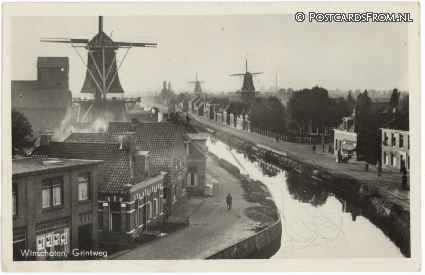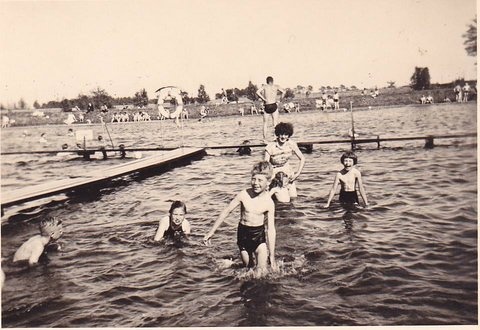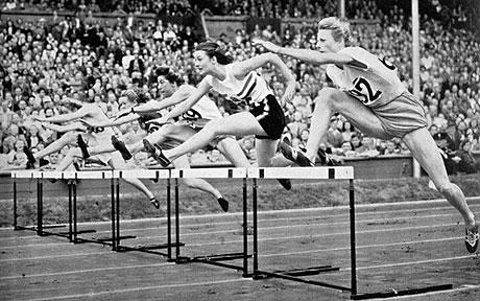
Sense's Reminiscences
by Sense de Jong
- Geurt
- Tante Betje (by Sense)
- Tante Betje (by Truus)
- Miss Roozendaal
- Concert in Winschoten
- A baptism remembered
- My birdhouse
- War veterans
- Henk Smit - bass/baritone
- Stefan
- In memory of Herman - I
- In memory of Herman -II
- Remembering AK
- Our love for music
- Herman - Promoter of Christian Causes
- A Salem evening with Herman de Jong
- From Elsinore to Monschau
- A Danish Treat
- Glimpses of Thuringia and Saxony
- Domie and Hansie
- La Manche, Newfoundland
- Bermuda - Isle in the Sun
- 1932 and 1934
- 1940 - 1945
- Winschoten, Grace on the Venne
- 1948
- Johann Sebastian Bach
- From Generation to Generation
- Seven children and a harmonium
- K.P. - A Man of Enterprise
- Cuba and the tragedy of the MS St Louis
- It all began in Norwich, Ontario
Another site by Sense de Jong:
~ Hinne de Jong ~
A Chronicle
Sites by Henry de Jong:
~ Herman de Jong ~
Memorial
~ Newmaker Notes~
Writings, Pictures, Collections
~ AACS/ICS Niagara Conferences~
1970 - 1991
After the war years, I became much involved in the sport I love most: soccer. Teachers at the schools I attended often wagged their fingers at me, reporting to my parents I was spending too much time playing soccer. There was no TV in those days, only radio. Fortunately, after our precious radio was confiscated by the Germans during the early 1940s, we got a decent "Grundig" radio after Liberation Day in 1945.
Radio had become a source of much joy for soccer fans. We knew every member of the Dutch national team. We will never forget the enthusiastic voice of the legendary Dutch broadcaster, Han Hollander, who, in his unique riveting style of speaking, had us on the edge of our seats as he called the games between the national teams of Holland and Belgium. Legendary names of Dutch soccer stars like Wilkes, Rijvers, Kraak and Lenstra will always be with us. This was before the days of stars like Johan Cruyff, Johan Neeskens, Ruud Gullit and the like.

I was only 14 in 1948 and had risen through the ranks of my team, called CVW (Christian Voetbalclub Winschoten), from Junior A to Junior B (I reached Senior at age 17). In my Junior A days I had my nose smashed in by a member of the opposite team who kicked my head rather than the ball. After the game, my Mom went hysterical, because my nose was in the nine o’clock rather than the twelve o’clock position. She ordered my Dad: take him to Dr. Moolhuizen, the ear-nose-throat specialist in our city. That man hurt me rather badly. He told my Dad to hold my head while he, with his hands, pushed everything back into place. He shoved a whole pile of medicated cotton up my nose and I was sent home. Even today, I can still feel the imperfections in my nose.
We played our home games on a large, fenced-in sport field located on the south side of town, near the Garst/St. Vitusholt intersection. It had three soccer pitches, with a field hockey pitch in the back. The central field had a grandstand, with the dressing rooms, toilets, etc. It was always a great honour to play on that field. I once saw the famous English Tottenham Hotspur team play an exhibition match with one of the local teams. The Spurs performed magic tricks and we stood in awe observing their skills.

Our municipal swimming pool was located behind this large sport complex. It was the only public, outdoor pool in town. It was always full of bathers in the summer and we boys regularly cavorted there in the water. The pool was a small lake surrounded by a tall fence. We entered through a door next to the poolmaster’s office. His name was Kroeze, a name well-known to many Winschoters. With his booming voice he made announcements through the loudspeakers or he would play music. Upon entering the pool area, the girls went to the left, the boys to the right to their respecting change cabins. The whole area became so familiar to me that, today, I can still, in my mind, walk into every nook and cranny of the complex.
The focal point of the lake was the 50-metre pool where sometimes races took place. I must have been a good swimmer. I once swam the entire length of that pool under water! It was almost totally surrounded by pier-like structures with long planking on top. There were smaller pools for beginners. You could walk all over the pool area from one pier to another. Across Kroeze’s office, a pier extended along the 50-metre pool to the end where the diving tower was located. We just stood in awe when experienced divers gracefully descended from the heights into the water without killing themselves. I was on that tower once, I jumped off, I survived, and never did it again.
There was a man-made beach close to the shallow end of the lake reserved for sun lovers, especially families with children. During the war we observed German soldiers coming through the entrance. That was always a chilling experience, but we soon figured out that they, too, needed a swim once in a while. They always made a beeline for that little beach for a time of sunbathing. We observed their scantily-clad bodies and couldn't help but snicker seeing their tiny swimming pants.
The year 1948 was the year of the Games of the XIV Olympiad, held at Wembley Stadium in England. This was the first Olympics, since 1936, after WWII. A record 59 nations were represented who sent a total of just over 4100 athletes. It should be noted that, because of their role in the war, neither Germany nor Japan received invitations to participate. The USSR was invited but chose not to send any athletes.

During the days of the London Olympics we were glued to the radio and each day we scanned our local paper to learn about the outcome of the events of the previous day. We soon discovered that our star-athlete, Fanny Blankers-Koen, was doing extremely well. Fanny was a 30-year old mother of three, one of the most famous athletes, not only in the Netherlands, but also in the world. And soon she would make Olympic history! She was dubbed "The Flying Housewife." She came home with four Olympic golds, won in the 100 metre and 200 metre races, the 80 metre hurdles, and, finally, in the 4 x 100 metres women relay. At that time female athletes were limited to three individualistic events. Amazingly, Fanny was also a world record holder in the long and high jump!
We were at the swimming pool on the day that the women ran the 4 x 100 metre race. Never will I forget the voice of Poolmaster Kroeze announcing that Fanny Blankers- Koen had won her fourth gold medal in this exciting event.
These are some of the things I remember from that year. I was still studying like crazy. Our home on the Acacialaan in Winschoten was not so quiet anymore. I now had a five-year old brother, Jaap, and a three-year old sister, Hennie. I loved them to pieces. But I am still haunted by the question whether or not I spent enough time with them!
Postscript
How many April 1 Fool’s jokes do you remember? Think about it!
The residents of my hometown (Winschoten - in north-east Holland) did not know that the Allieds planned to bomb the German island of Helgoland from the face of the earth following WWII.
This island, located in the so-called “Deutsche Bucht,” about 46 km. off the German coastal town of Cuxhaven, was a major German naval base, especially for the dreaded U-boats.
During a March (year?) month shortly after the war, our local newspaper – the “Winschoter Courant” – announced that the whole area of eastern Groningen could expect a terrific blast coming from the North Sea. The island of Helgoland would be blown up on the morning of April 1. The newspaper stated that the shockwaves resulting from the blast could conceivably cause considerable damage to the windows in the area affected. All Winschoters were advised to stay indoors and make sure that every window in their houses stayed wide open.
I remember that fearful day and the general nervous attitude of the people in our city. All the windows and many doors in our street were open. You know, of course, what happened. No blast. No broken windows. It was all a joke!
Note: I learned from Wikipedia that on April 18, 1945, Helgoland was hit hard following a massive bombardment. On that day, 969 Allied aircraft (617 Lancasters, 332 Halifaxes and 20 Mosquitoes) bombed the naval base, airfield and town into a crater-pitted moonscapes. Three Halifaxes were lost. The little island was evacuated the following day.
And now the Fanny Blankers-Koen story. (See story above.)
During August 2014, I had a transatlantic conversation with my old high school buddy, now a retired farmer living in the village of Bellingwolde, close to Winschoten. We were talking about my story about Fanny Blankers-Koen winning four gold medals at the 1948 London Olympics. He remembered it very well. He then asked me if I knew that Fanny actually grew up close to his farm. The Koen family farm was located near Ulsda, a little place adjacent to the railroad between Winschoten and Nieuweschans. He went on to say that the newspaper in Winschoten, during March 1949, pulled another fast one around April 1 of that year.
It announced that on April 1, 1949 – the year after the London Olympics – the world-famous Fanny Blankers-Koen would arrive at the Ulsda train station to visit her nearby parental home. She would bring her four golden medals. People were invited not to let this chance to meet a famous athlete go by! And, sure enough, people from far and near came and assembled at the train station on April 1. Maybe my friend was among them. But who was on the train? No Fanny. The people had been duped again! (sdj)
[an error occurred while processing this directive]